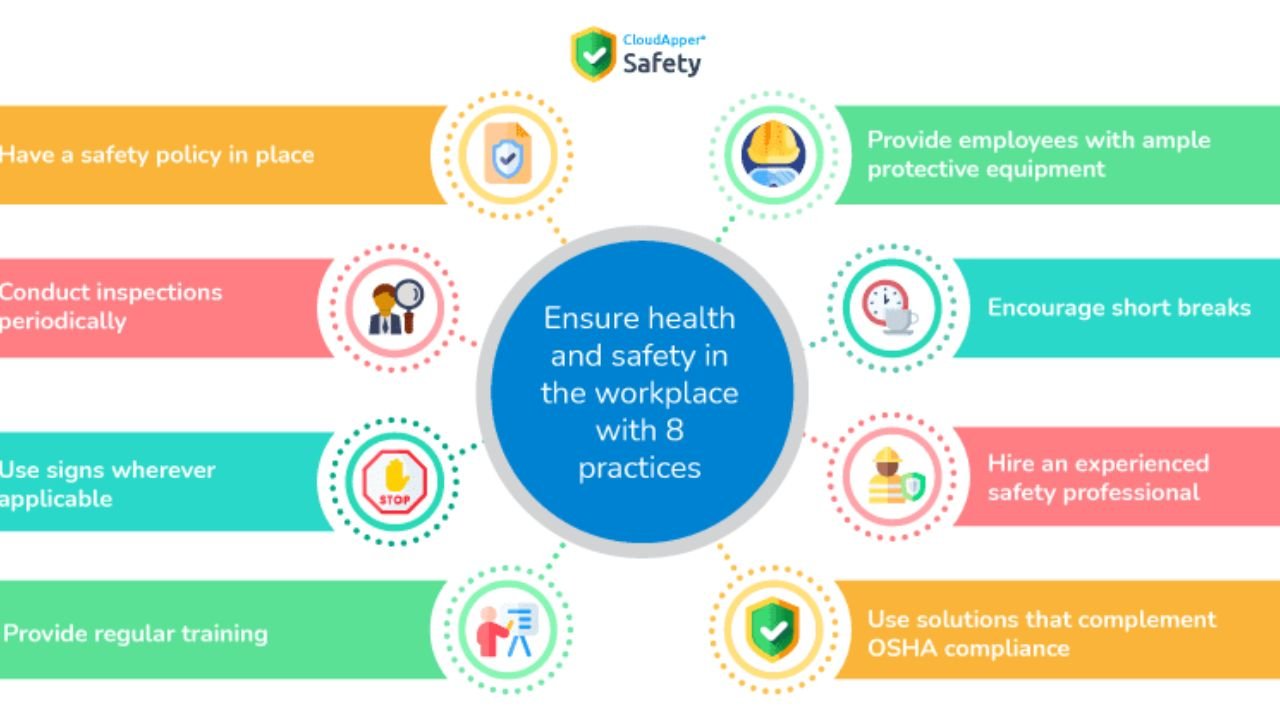As Health and Safety Certification gets increasingly robust in the current work setting, a strong certification is more than a compliance mandate. It is a promise toward developing a culture of trust and responsibility. The core of this promise is the Principles of Safeguarding that serves as a guide to ensure the well-being of each person at the work place. Safeguarding is more than just about policies and it is a combination of awareness, prevention and intervention to have a secure and supportive order. With the above considerations, organisations can derive safer and healthier working environments where no one is left behind feeling neglected or unsafe.
This blog paper will address workplace health and safety issues that can be greatly helped by safeguarding.
The Concept of Safeguard in the Work Place
Occupational safety focuses mostly on injury or harm prevention to workers at workplace. These involve activities that are taken to reduce the risks that are not realized and the provision of employee resource information that safeguards the employee and those around him. As much as safeguarding deals with the risks of vulnerable persons, it is also applicable in workplace arrangements to safeguard physical and mental health of all employees.
Due to the fact that safeguarding principles imply the improvement of risk-free environment and the encouragement of preventive measures by all individuals in a particular environment, the implementation of these concepts into the work environments of SMEs makes it easier to achieve health and safety objectives.
The role of Safeguarding within healthier and safer workplaces
The main ways through which safeguarding improves health and safety at the workplace are listed below:
1. Identification and Avoidance of Proactive Risks
The emphasis and concentration of identifying and minimizing risks prior to developing as a major issue is one of the primary benefits of protection. Adherence to the safeguarding guidelines can help organisations to:
- To identify potential hazards in a workplace, conduct thorough risk assessment.
- Treat risks to mental health and well-being as well as those being related to physical safety like hazardous substances or equipment breakdowns.
- Put into place ways through which team members can raise issues secretly so that issues can be rectified in a short time.
- These process will ensure employees are in safe working environment where dangers are frequently measured and minimized.
2. Empowering of Employee Awareness and Education
The concepts of preservation focus on the importance of training the members of the team to recognise risks and eliminate them. Health and safety may be improved through training programmes through:
- Training members of your team to identify risky situations and conducts.
- Providing them with the means on how to address problems including speaking up concerning risky conditions or assisting a colleague who is experiencing a problem.
- Education concerning the concerns affecting the mental and physical health, which may affect the safety of employees.
- This level of awareness promotes a culture of group consciousness and enables the workforce to assume responsibility over its safety.
3. Enhancing a Culture of Accountability
Securing IOSH Membership demonstrates your commitment to professional development and workplace safety, providing global recognition, valuable networking opportunities, and access to exclusive resources that help advance careers in occupational health and safety management
The principle of protection emphasizes the fact that each person should contribute to the establishment of a safe and motivating work environment. When these concepts are applied in the workplace regarding safety and health; organisations can:
- Make sure every one, including top management and even entry level team, understand that it is their duty to make sure that they keep people safe.
- Make employees speak up without the fear of getting punished by ensuring there is an atmosphere where open communication and responsibility prevails.
- Build trust between the management and the team by once again re-stating that health and safety are parts of the organisational goals.
- This accountability translates to an improved compliance to the health and safety procedures which reduces the number of accidents and creates a culture of mutually caring.
4. Prevention of Workplace Harassment and Abuse
The principles also reflect on elements like work place safety against harassments, discrimination, and abuse of employees which is a basic premise of workplace safety. An employment free of these issues assures:
Professionals looking to enhance their workplace safety knowledge and career growth often choose IOSH Courses, as these globally recognized programs provide practical skills, industry insights, and certifications highly valued by employers across multiple sectors
- Health problems associated with the stress decrease with an improved mental health status of workers.
- A friendlier environment and a positive attitude in front of each and everyone is respected and valued.
- Happier employees and low rates of staff turnover contribute to workplace stability.
- Other than the problems that are typically not covered in general protection plans, protection offers a wider blanket of security to the employees.
5. Resilience and Emotional Well-Being
Health and safety does not only relate to physical measures; psychological or emotional health are also part of it. The dos and don for protection are beneficial as:
- Allowing access to such resources as mental health support or counselling services.
- Encouraging work-life balance initiatives that reduce burnout and health-related issues.
- Establishing an environment in which workers can communicate their concerns over their stress, workloads or personal conflicts in a free manner.
- Emphasising the emotional well-being will ensure that employees are not psychologically and physically exposed to dangers to enhance morale and productivity.
Conclusion
A radical approach to enhancing health and safety is to integrate the spirit of safeguarding in the routine functions. The comprehensive guide on employee protection is provided by safeguarding to help prioritise proactive risk management, team education, responsibility, anti-harassment and mental well-being. These principles can be properly implemented with the help of free resources provided by The Knowledge Academy and offered to organisations. Eventually, security ensures that all people can be successful by creating a working environment where safety is not just an outlined policy but a day to day reality.



